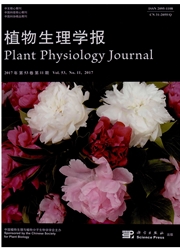

 中文摘要:
中文摘要:
为探讨真盐生植物盐地碱蓬根系特征及活力与盐胁迫的关系,在水培条件下,分别研究了0、200、400和600mmol·L-1 Na Cl处理对盐地碱蓬根系生物量、根系活力等生理指标的影响。结果表明:随着Na Cl处理浓度升高,盐地碱蓬根系干重和鲜重、总长度、表面积、总体积及根尖数总体呈先升高后下降趋势,其中,最大值出现在200 mmol·L-1 Na Cl处理下。200 mmol·L-1 Na Cl处理显著增加了盐地碱蓬根系的干重和鲜重及总长度,而600 mmol·L-1 Na Cl处理极显著抑制了盐地碱蓬根系干重和鲜重以及根尖数,同时显著降低了根系的总长度、表面积和总体积。根系活跃吸收面积及游离脯氨酸含量随Na Cl浓度的升高而增加,600 mmol·L-1 Na Cl处理时达到最大值。这些结果表明,较高浓度的Na Cl处理可能通过增加盐生植物根系总长度、总吸收面积和根总体积促进盐地碱蓬根系生长来适应盐胁迫;而过高盐浓度则通过降低根系总长度、总吸收面积和根总体积抑制根系生长。
 英文摘要:
英文摘要:
To investigate the role of salinity in root characteristics and activity of euhalophyte Suaeda salsa,root biomass,vitality and other physiological indicators were determined under the conditions of solution culture containing 0,200,400 and 600 mmol·L-1 Na Cl. The results showed that the dry and fresh weights,total length of root,surface area,total volume and root tip number of S. salsa increased as increasing of Na Cl concentration,and the maximal values were at 200 mmol·L-1 Na Cl treatment compared with the control. However,600 mmol·L-1 Na Cl treatment significantly reduced the root dry and fresh weights,and root tip number. The root active absorbing area and free proline content in the roots of S. salsa increased with the increasing of the Na Cl concentration until to 600 mmol·L-1 Na Cl. These results suggest that high concentration of Na Cl(in a range of 200 mmol·L-1 Na Cl) significantly enhanced the root growth of S. salsa possibly via increasing the total length,active absorbing area and the total volume of roots to adapt salt stress,while excess salt reduced the root growth of S. salsa possibly via decreasing these parameters.
 同期刊论文项目
同期刊论文项目
 同项目期刊论文
同项目期刊论文
 期刊信息
期刊信息
